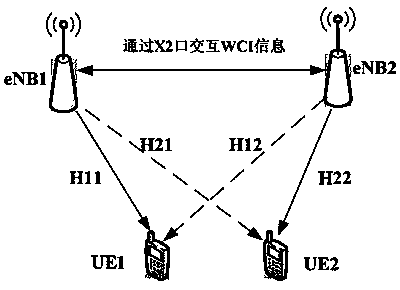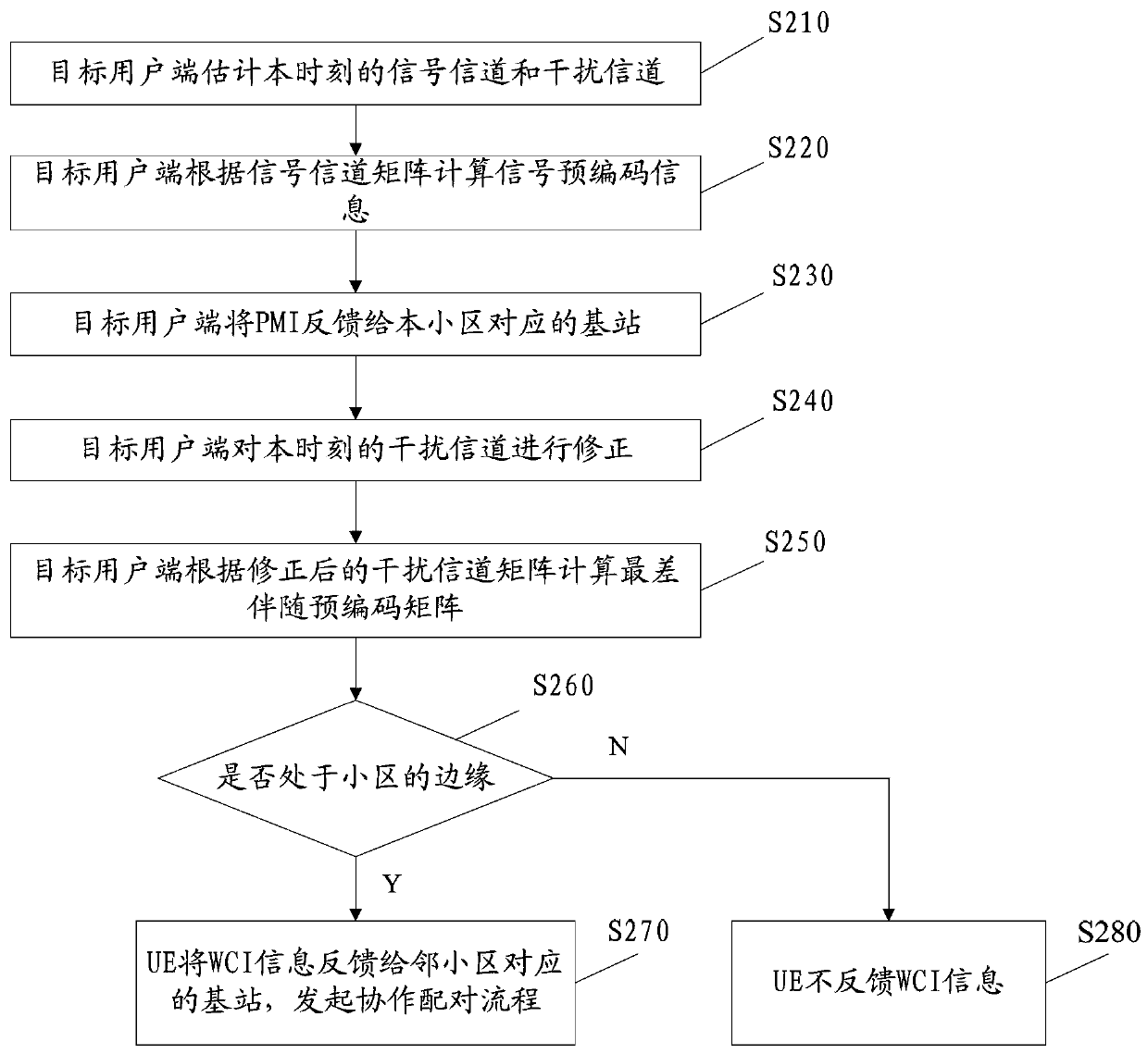Coordinated multi-point pairing method and device
A multi-point cooperative and cooperative base station technology, applied in the field of communication, can solve problems such as waste of overhead, cooperative pairing is not the best pairing, etc., to achieve the effect of improving accuracy, improving throughput and spectrum efficiency, and improving performance
- Summary
- Abstract
- Description
- Claims
- Application Information
AI Technical Summary
Problems solved by technology
Method used
Image
Examples
Embodiment 1
[0055] This embodiment provides a coordinated multi-point pairing method, which is applied to a CoMP multi-antenna based communication system and executed by a UE. Such as figure 1 As shown, the method includes:
[0056] Step S110: The target UE estimates the signal channel and interference channel at this moment;
[0057]Step S120: the target UE calculates the PMI according to the signal channel;
[0058] Step S130: the target UE corrects the interference channel at this moment;
[0059] In this step, the interference channel at this moment is corrected by smoothing. For example, the interference channel at this moment is corrected according to the interference channel at this moment and the interference channel at the previous moment, or the interference channel at this moment is corrected according to the interference channel at the previous two moments, or the interference channel at this moment is corrected according to the interference channel at the previous three mo...
Embodiment 2
[0065] This embodiment provides a coordinated multi-point pairing method, which is applied to a CoMP-based multi-antenna communication system and executed by a UE, specifically in the scenario of two users in two cells, as Figure 2A shown. Wherein, the base station side uses 4 antennas to transmit data, and the UE side uses 2 antennas to receive data. UE1 belongs to eNB1, UE2 belongs to eNB2, UE does not move or handover between cells, and only moves within the cell. UE1 and UE2 are allocated the same frequency resources, and eNB1 and eNB2 exchange WCI information through the X2 interface. Such as Figure 2B As shown, the method includes:
[0066] Step 210: The target UE estimates the signal channel and the interference channel at this moment.
[0067] In this step, for the eNB1 of the local cell, the user UE1 of the local cell estimates that the signal channel between the eNB1 of the local cell is H 11 , the interference channel between UE2 in the neighboring cell and e...
Embodiment 3
[0100] This embodiment provides a coordinated multi-point pairing device, such as a UE. Such as image 3 As shown, the device includes:
[0101] An estimation unit 310, configured to estimate a signal channel and an interference channel at this moment;
[0102] A correction unit 320, configured to correct the interference channel at this moment;
[0103] A calculation unit 330, configured to calculate the PMI according to the signal channel; and calculate the WCI according to the corrected interference channel;
[0104] The sending unit 350 is configured to report the precoding information to the local cell and the WCI to the corresponding base station of the local cell, and the corresponding serving base station exchanges the WCI to the cooperative base station for the cooperative base station to enter the coordinated multi-point pairing process.
[0105] The correction unit 320 corrects the interference channel at this moment by smoothing. For example, the interference c...
PUM
 Login to View More
Login to View More Abstract
Description
Claims
Application Information
 Login to View More
Login to View More - R&D
- Intellectual Property
- Life Sciences
- Materials
- Tech Scout
- Unparalleled Data Quality
- Higher Quality Content
- 60% Fewer Hallucinations
Browse by: Latest US Patents, China's latest patents, Technical Efficacy Thesaurus, Application Domain, Technology Topic, Popular Technical Reports.
© 2025 PatSnap. All rights reserved.Legal|Privacy policy|Modern Slavery Act Transparency Statement|Sitemap|About US| Contact US: help@patsnap.com



